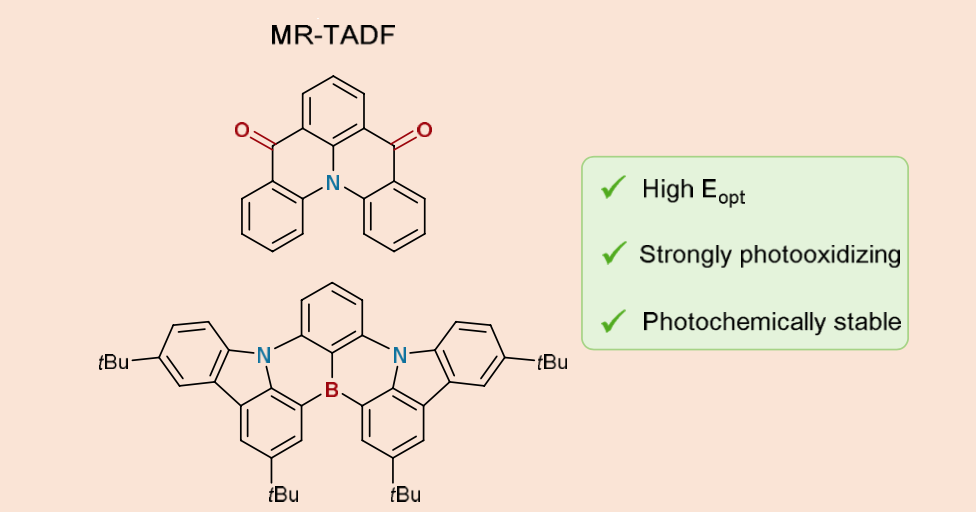Research Project 1
State of the art
- Most current photocatalysts are based on noble metal complexes, which are not sustainable and are expensive.
- Purely organic photocatalysts hold great promise as alternatives to transition metal photocatalysts. A subset of organic photocatalysts that has generated much recent interest are those based on a thermally activated delayed fluorescence (TADF) design, with the most common photocatalyst studied being 4CzIPN.
- Developing more strongly photoreducing or photooxidizing photocatalysts requires careful design to not only modulate the oxidation and reduction potentials of the compound but also the optical gap.
 Scheme 1. Design of MR-TADF photocatalysts.
Scheme 1. Design of MR-TADF photocatalysts.
Progress beyond the state of the art
- A series of deep-blue emitting MR-TADF emitters have been developed within the USTAN group. The starting point will be to assess this subclass of TADF emitters as photocatalysts (Scheme 1) in a family of model photoredox and energy transfer photocatalysis reactions.
- Special attention will be paid to developing photocatalysts with highly reversible electrochemistry, which should leave to greater TON due to greater stability of the oxidized/reduced photocatalyst.
- These photocatalysts will be contrasted with deep blue emitting donor- acceptor TADF photocatalysts previously investigated in the USTAN group or known from the literature.
Key Objectives & Expected Results
Performance Indicators
- Establish photooxidant/photoreductant strength of at least two newly photocatalysts.
- Establish the impact of solvent medium on the photocatalytic performance of these TADF photocatalysts where it is already known that polarity of the medium affects strongly the photophysical behaviour of the compounds.
- These new photocatalysts will be tested in new photocatalyzed transformations developed by other partners within the consortium (See WP3).





